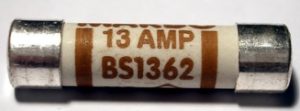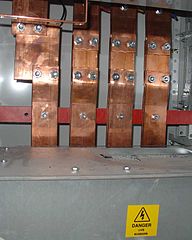Electric Circuits
The Basic Anatomy of an Electrical Circuit
The term circuit means circular journey or loop. It is the loop travelled by the electrons. There are some basic components that must be present in a circuit so the electrons can flow:
Source: This is the device that changes other forms of energy into electrical energy. It provides the EMF that pushes the electrons through the circuit. In other words, it is the source of electrical pressure. Some examples are batteries, solar cells, generators, and thermocouples.
Switches: Switches are devices that control the opening and closing of circuits. A closed circuit is a circuit that has a completed path for current flow. If there is a break anywhere in the circuit in which current could not flow, we would have an open circuit.
Fuses and Breakers:

Fuses and breakers are used in the path of current for protection. They are designed to intentionally open if the current exceeds a specific rating. For example, if a fuse or breaker is rated at 15 amperes, and the current in the circuit goes above 15 amperes, they would “trip” or open, causing a break in the circuit.
Fuses are different than breakers in that once they trip, they have to be replaced. A circuit breaker can be reset and used repeatedly.
Load: This is the device that changes electrical energy into other forms of energy. It’s also known as potential difference. This is the part of the circuit that does useful work. Some examples are lights, heaters, and motors.

Conductors: These complete the path for the electrons to flow.
Conductors can come in the form of:
- Wire
- Busbar
- Copper
- Aluminum
Drag and Drop!
Polarity and Direction of Current Flow
We talked earlier about the term polarity, which is the charge at one point with respect to another.
In electric circuits, we often refer to the polarity of different points in the circuit. This is important to understand for connecting meters and some polarity-sensitive devices.
Current flows through a load from negative to positive. Current flows through a source from positive to negative.
DC vs AC
So far, the circuits we have been discussing have polarities that do not change. Electrons flow only in one direction. This is known as direct current (DC). Examples are batteries, thermocouples, DC generators, and solar cells.
Alternating current (AC) changes its direction continuously and at regular intervals. AC is produced by alternators. AC current used in our homes is a 60-cycle AC. This means that it changes polarity 120 times per second, producing 60 complete cycles. This will be covered in more depth in future lessons.

